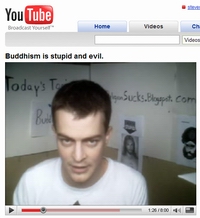Research Strategy:
YouTube
Among the videos of people acting stupid, you can also find many quality videos on YouTube; videos that might help you gain insights into your research. Search YouTube by key word and see what turns up.
When I first created this page in 2009, I argued that YouTube was especially helpful when I was trying to find information on musical topics. As an example, I cited the example of trying to find an example of a Pipa to play for my class. On 16 July 2009, a search of YouTube turned up 17,500 entries. On 26 May 2019, 682,000 results were returned.
Since it began, YouTube has not only increased in the number of entries, but also in quality. No longer is YouTube a place to go to find video snippets of people's lives; snippets that could be shown on World's Dumbest. Quality documentaries and feature length films produced by the History Channel, the Discovery Channel, and others have also been legally posted in YouTube. Quality student projects and short films are also available.
Care needs to be taken because not everyone who posts on YouTube does his/her research. Some people are clearly not concerned with accuracy. As with any other source, you need to vet YouTube videos for quality.
